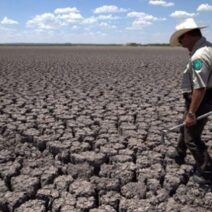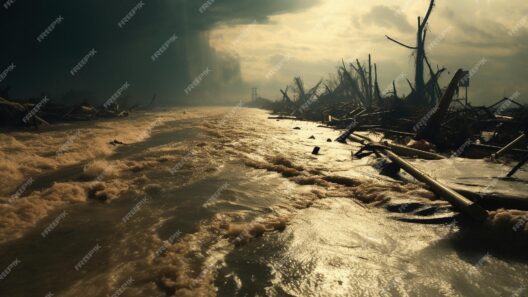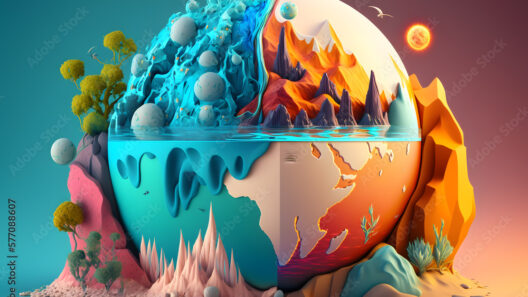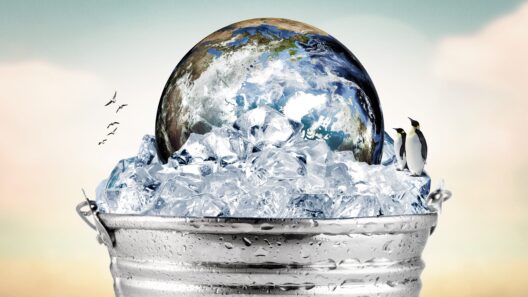Glaciers, often referred to as the Earth’s frozen reservoirs, hold an undeniable fascination among scientists and nature enthusiasts alike. As colossal masses of ice, they serve as indicators of climatic changes, containing essential records of Earth’s atmospheric conditions over millennia. Their retreat and ablation due to rising global temperatures spark a significant debate: Can glaciers grow back in a warmer world? To address this question, one must delve into the complexities of glacier dynamics, the implications of climate change, and the broader consequences for ecosystems and humanity.
Glaciers are dynamic entities that evolve in response to climatic fluctuations. They grow during cooler periods when snowfall exceeds melting, while they retreat in warmer conditions. Historically, despite prevailing climatic conditions, glaciers have shown resilience and adaptability. However, the current rate of global warming is unprecedented, driving ice loss at alarming rates. Models indicate that glaciers worldwide are in a state of existential crisis, with estimates suggesting a significant portion could vanish by the turn of the next century.
The warming trends not only contribute to glacier shrinkage but also alter the conditions for potential regrowth. Over the last century, average global temperatures have risen significantly. In such a delicate balance, both temperature and precipitation levels are critical. For a glacier to maintain itself, the ‘mass balance’—the difference between accumulation (through snowfall) and ablation (loss through melting and sublimation)—must be in its favor. With increasing temperatures, the likelihood of favorable conditions diminishes considerably.
Interestingly, even in warmer climates, some regions may experience localized glacier growth, albeit under very specific circumstances. For instance, enhanced precipitation can create enough snowfall to foster glacier growth. This phenomenon has been observed in certain areas such as the Himalayas, where increased monsoonal precipitation can lead to mass accumulation. However, this potential for localized growth does not negate the overarching trend of global glacier retreat.
Furthermore, the geographical context plays a pivotal role. High-altitude glaciers positioned in cooler and more temperate regions might exhibit some resilience compared to their low-lying counterparts that are more susceptible to extreme warming. The rate of atmospheric warming, the presence of cloud cover, and the variations in local weather patterns can lead to differing outcomes for glaciers positioned at various latitudes.
The intricacies of glacial environments extend far beyond mere ice. Glaciers impact freshwater supplies, biodiversity, and global sea levels. As they recede, they expose landscapes previously locked in ice, leading to ecological shifts that can profoundly affect flora and fauna. Moreover, the meltwater produced by retreating glaciers is a vital resource for millions of people, feeding rivers and reservoirs. Thus, the question of glacier regrowth not only influences regional ecosystems but gradually expands to impact our global environment.
Additionally, glacial melt has implications for climate feedback mechanisms. As ice diminishes, less solar energy is reflected away from the Earth’s surface, leading to further temperature increases. This phenomenon, known as the albedo effect, creates a feedback loop that exacerbates warming, which in turn accelerates glacial loss. Consequently, the possibility of glacier regrowth remains intricately tied to global efforts to mitigate climate change.
Public awareness and understanding of glacier dynamics are pivotal in driving conservation efforts. Environmental policies aimed at reducing greenhouse gas emissions, promoting sustainable land use, and curtailing deforestation become imperative for the preservation of these majestic ice formations. Collaborative global initiatives that foster awareness and engagement can lead to a collective effort to counteract detrimental changes in our climate system. The discourse surrounding glaciers is not merely academic; it serves as a bellwether for the health of our planet.
A critical aspect of addressing glacier recovery revolves around research and monitoring. As the landscape of glacial environments changes rapidly, continuous scientific inquiry allows for a clearer understanding of their behavior under various climate scenarios. Technological advancements, including satellite imaging and climate modeling, have improved the ability to track glacial dynamics, enabling timely responses to shifts in their mass balance.
In conclusion, while localized glacier growth may occur under fortunate climatic conditions, the overarching trend of global warming poses a formidable challenge. The possibility of significant glacier regrowth in a warmer world seems increasingly remote without profound changes to current climate trajectories. Each glacier lost carries with it a story—a testimony to the interconnectedness of our ecosystems and the urgent need for sustainable stewardship of our planet. As stewards of the Earth, we must advocate for not only awareness but actionable solutions to combat the forces threatening these natural wonders, ensuring they continue to inspire future generations.







